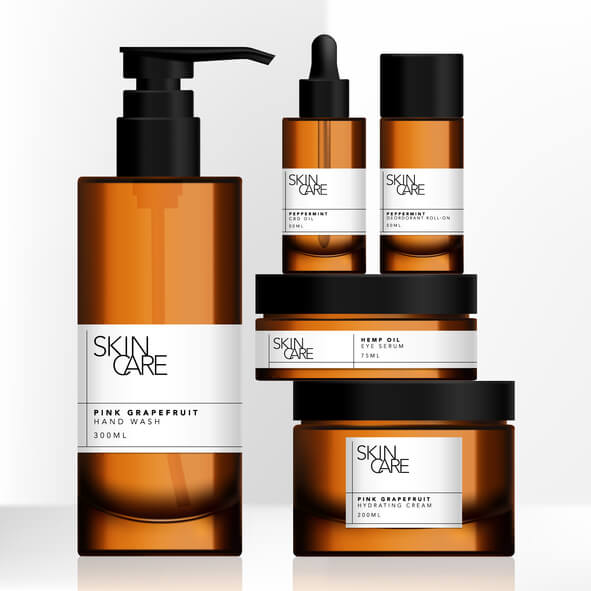Understanding Cosmetic Labeling Requirements
Product manufacturing is not limited to product creation. It also comes with packaging, labeling, and other requirements. Every step of the way is equally important and demanding. Especially if you are into cosmetic manufacturing, it’s important to comply with the strict regulations set by the Food and Drug Administration (FDA).
The FDA is a regulatory body that analyzes the safety and efficacy of human and veterinary drugs, biological products, medical devices, food supplies, cosmetics, and products that emit radiation for the use of the public.
Cosmetics marketed in the U.S., whether manufactured in the country or imported from abroad, must comply with the Federal Food, Drug, and Cosmetic (FD&C) Act, Fair Packaging and Labeling Act (FPLA), 15 USC Chapter 39, and 16 CFR Chapter 1 Subchapter E. These regulations are extensive, and incorrectly labeling your product can land you in a host of legal problems. It’s interesting to note that cosmetics are FDA-regulated and not FDA-approved.
In this step-by-step guide, we will discuss everything about complying with cosmetic labeling requirements. Of course, you should always consult with your legal team before printing the final product, but the experts at DRG Technologies can help you navigate the preliminary steps.
Cosmetics — As Defined by the FD&C Act
The FD&C Act defines cosmetics as items intended to be applied to the human body for cleansing, beautifying, promoting attractiveness, or altering the appearance without affecting the body’s structure or functions. These may include makeup, perfumes, body lotions, nail polish, and more.
Due to the chemical composition of such products, an analysis of their benefits and risks is imperative. Even though the manufacturers send their data reports regarding their products, the FD&C needs to test and approve them.
So, what kind of products need to comply with the regulations listed above?
Products that are cosmetics but also intended to treat or prevent disease, or affect the structure or functions of the human body, must comply with both drug and cosmetic laws. Examples are fluoride toothpaste, antiperspirants, deodorants, and more. This is in the best interest of public health and safety.
Cosmetic Labeling Requirements
Cosmetic product manufacturers must fulfill some labeling requirements, failing which they are liable for legal punishments, as much as a revoked license. This reinstates the importance of a thoroughly informative label on your products.
Customers also carefully assess and evaluate the labels of cosmetics to make an informed (and safe) purchase. For example, a survey conducted among 29,000 respondents across 40 countries revealed that almost 50% of the respondents look for claims such as “ammonia-free” and “cruelty-free” on the labels of cosmetics.
Label statements need to include:
- Name, logo, and location of the product: The name, logo, and mother company of the product must be printed on its forefront. The location of the business firm must also be on the information panel of the label. However, if the firm is currently listed in a city or telephone directory, the street address may be omitted.
- A list of ingredients: Be transparent with your ingredients. Also, mention allergens or ingredients that can cast side effects separately.
- Statement of the net quantity of contents: You must include an accurate statement of the net quantity of contents on the cosmetic in the package (weight, measure, numerical count, or a combination of these). The net quantity in terms of a solid, semisolid, or viscous cosmetic must be in terms of pounds and ounces. Liquids must be measured in terms of the U.S. gallon, quart, pint, and fluid ounce.
- Symbol: Identity by descriptive name or illustration of the nature or use of the product. For example, vegan, cruelty-free, etc.
- Directions for use: Briefly explain the right way to use the product for the best results.
- Manufacturer/ distributor information: If the distributor is not the manufacturer or the packer, this must be stated on the label using a phrase like “Manufactured for…” or “Distributed by…”
- Warnings: If the product can be harmful to consumers in some way, it must have a proper warning label and directions for safe use. You must also provide allergen information on the label.
Need Help With Your Cosmetic Labels? Trust DRG for All Your Labeling Needs
Each product will have its own labeling requirements, so it’s important to have your final label vetted by appropriate legal professionals before sending it to market. However, we can help you with the preliminary label design. Once it is approved, we can manufacture your label, no matter the size of your run.
For over 30 years, DRG Technologies has been a leading label products and solutions manufacturer headquartered in Safford, Arizona, with sales and logistics facilities in Nogales, Sonora, and Ciudad Juárez, Chihuahua, Mexico. Our industry-leading solutions help our partner manufacturers streamline their production, reduce costs, consolidate supplier bases, and ultimately deliver better, more resilient, and more effective products.
We are a private, family-owned company under second-generation ownership with extensive equipment, product solutions, and UL certification. We fulfill key compliance and quality standards, including UL, CSA, cUL, RoHS, FDA, ISO 9001:2015, and others. We also excel at consolidating parts, materials, and vendors such as labels, tags, manuals and instruction sheets, wire markers, ribbons, and printers.

